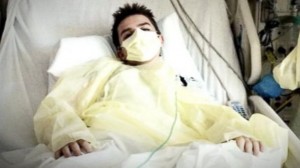Tag Archives for " Helping Hospital CEOs "

NJ court says hospitals can keep internal error reviews private
A recent New Jersey Supreme Court ruling has concluded that hospitals’ internal review reports written after adverse events occur should remain private. But, that doesn’t mean hospitals should not be tracking and reporting adverse events.
Under the ruling, the Valley Hospital of Ridgewood, New Jersey is allowed to keep secret a memo that was written after a roundtable discussion, following events that led to a 2007 malpractice suit alleging a newborn suffered brain damage as a result of negligent care during birth.
In the 4-3 majority ruling, the court said, “[t]he Legislature included in the Patient Safety Act a provision creating an absolute privilege. It reasoned that healthcare professionals and other facility staff are more likely to effectively assess adverse events in a confidential setting, in which an employee need not fear recrimination for disclosing his or her own medical error, or that of a colleague.”
The 2004 Patient safety Act, the Supreme Court was referring to, ensures the confidentiality of healthcare workers in order for them to be more forthcoming when a hospital error is made. Without this provision, hospital staff are less likely to report an adverse event for fear of being held liable. Doctors and nurses should feel they are protected, without the threat of reprisal, to share all information surrounding a bad outcome — allowing for timely and accurate incident reporting.
Timely and accurate incident reporting is essential to improving patient care by identifying adverse event trends due to bad practices, poor planning, or insufficient training. A study from the Journal of Patient Safety calculated the annual toll of preventable deaths due to medical errors in hospitals at as many as 440,000. The finding did not include tens of thousands more who die outside of hospitals from medical mistakes such as drug or diagnostic errors.
It can easily be argued that, in a hospital environment conducive to efficient incident reporting — where all staff feel secure to participate in a culture of quality — and with a robust, integrated Risk, Quality and Performance Improvement program, a large number of those 1,000 deaths per day are preventable.
Temporary Paralysis and Other Things You Need to Know About Enterovirus
————————————————————————————————————————–
There is still a mystery surrounding Enterovirus cases spreading around the country. Now the CDC is investigating possible connections between the virus and temporary paralysis. Although its symptoms are similar to the common cold, its rapid progression and severity makes it very different — with many cases ending up in Intensive Care. Hundreds are hospitalized in 11 states, at higher risk are children with asthma.
Here are some important things you should know:
• Highly contagious, spreadable by cough or sneeze, and also can live on surfaces. But full knowledge of how is spreads is unknown due to lack of scientific studies on the virus.
• Starts like common cold; Runny Nose, Coughing, sneezing and fever
• Progresses rapidly; difficulty breathing, possible loss of consciousness (look for wheezing, shortness of breath or difficulty speaking)
Apparently this isn’t the first case of an outbreak of Enterovirus (EV-D68). According to a 2011 CDC report, from 2008 to 2010 there were clusters of Acute Respiratory Illness associated with EV-D68 across multiple continents including Asia, Europe and the United States. While it’s not the first time however, health officials are scratching their heads as to why it has reemerged… and with such voracity.
Particularly alarming is the lack of specific treatment for the virus and its, now possible, connection to acute onset of focal limb weakness — or temporary paralysis. Instead, health officials are tasked with treating the symptoms of the infection, often requiring hospitalization.
For the most current information on the virus, and to find out what is being done about it, visit the CDC website.
The CDC has a specific link for Healthcare Professionals on Evaluating, Reporting, Testing and Infection Control Recommendations here.
Hospital CEO Turnover – lack of tools for a key responsibility ?
A recent article in Hospital Dive “Hospital CEO turnover: A symptom of a greater sickness?“, touched on some real problems that are actually somewhat peripheral to the CEO’s core functioning – including pressure from investors and payors and the general and historical challenges in IT for healthcare.
Obviously the most proximate and impactful measure of a CEO’s success is institutional financial success. However, that is merely the scoreboard for the functional and operational success of what hospitals and other healthcare delivery organizations do — deliver healthcare. Patient care quality is inescapably foundational to the operational and financial goals of any CEO of a healthcare delivery organization (HCDO). More and more, regulations, practices and thinking in healthcare are holding CEOs directly responsible for patient care quality. It is no longer sufficient to simply meet the mandates of external reporting, as delegated to mid-management specialists. As almost all other industries have embraced, hospital CEOs are needing to stay on top of “the numbers” or metrics of functional performance — preferably in, or near, real-time. This is the only way for a hospital CEO to not only drive patient care improvement but demonstrate her/his effectiveness at doing so.
The age-old methods and practices for managing Quality — largely paper, Excel spreadsheets or rudimentary systems for boffins and data analysts — simply do not cut it for regular use by CEOs. Queries, jotted notes, desktop calculations and raw data are not actionable or useful items alone. What the CEO needs is INSIGHT.
Insight (the highest order of the evolution of information) informs someone what he or she needs to do. Simply passing responsibility for all of the queries, data manipulation, filtering and analysis off to subordinates fails to solve the real issue of involving the CEO in the work of driving improvement. Advanced techniques in business intelligence, or BI, as used in other industries, include normalizing, compounding and distilling a lot of data into critical insights that a CEO can internalize in 10 minutes instead of four mind-numbing hours in a governing board meeting. When a platform can do that, and be used by executives and clinical managers, the organization gains a whole new paradigm for managing clinical care quality which coalesces into a “culture of quality” that has staying power.
 It was for this purpose that ActionCue Clinical Intelligence was created, and is steadily evolving. We at Prista call the ability of the CEO, with the use of the ActionCue platform, to find out in 10 minutes exactly where performance issues exist within the entire clinical operation and what the organization is doing to correct them, the Fast Path to Insight™.
It was for this purpose that ActionCue Clinical Intelligence was created, and is steadily evolving. We at Prista call the ability of the CEO, with the use of the ActionCue platform, to find out in 10 minutes exactly where performance issues exist within the entire clinical operation and what the organization is doing to correct them, the Fast Path to Insight™.
To learn how you can gain meaningful insight and quickly begin to improve your patient care, call today to request a short demonstration and find out how the ActionCue Clinical Intelligence software will work for you and your organization.


